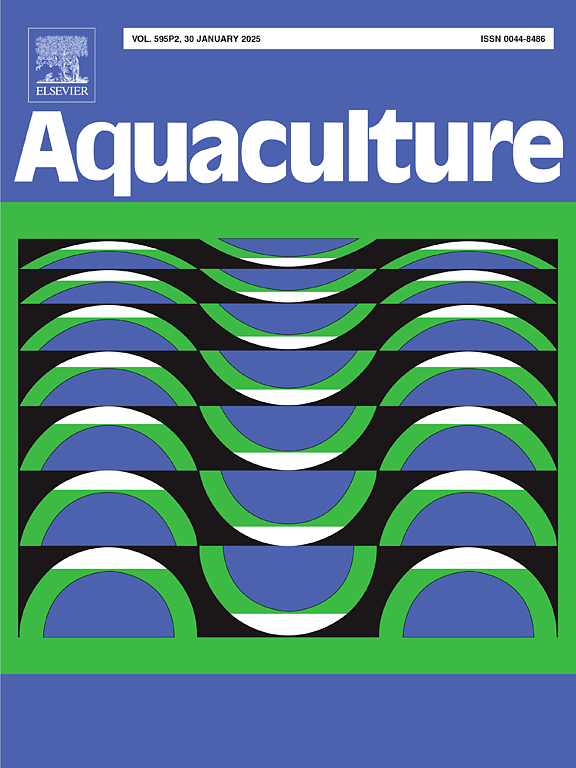European eel larvae are sensitive to vibration and light
IF 3.9
1区 农林科学
Q1 FISHERIES
引用次数: 0
Abstract
European eel (Anguilla anguilla) earliest life stages haven't been encountered in nature, thus, studying behavior of hatchery-reared larvae is crucial for understanding their ecology and developing rearing protocols. Utilizing computer-assisted video tracking we investigated the behavior of hatchery-reared eel larvae from hatching to the first-feeding stage at 12 days post hatch (dph). Trials focused on escape responses linked to mechanical (vibration) and visual (light) stimuli, repeated at 60 s intervals and selected to mirror stimuli encountered in hatchery settings. Variables included distance moved in single-frame intervals, distance moved in 120 ms (3 frames), initial escape speed, total distance moved in 5 s, mean and maximum speed for the entire response. Escape probabilities were estimated by the hidden Markov model. Results revealed that eel larvae's responses to stimuli were stage-specific, corresponding to the development of sensory systems, where the lowest and highest escape probabilities were observed at hatch and 12 dph, respectively. Larvae demonstrated fast reactions to mechanical stimuli (vibration), but a stronger sensitivity to sudden changes in light intensity, with average maximum escape response speeds up to 40 cm/s. Moderate but consistent escape responses to repeated vibrations, suggest a potential inherent ability to detect and respond to mechanical stimuli, while a decreasing escape response trend with repeated light exposures might indicate a degree of habituation potential to visual stimuli. In conclusion, we highlight the importance of tailoring rearing protocols for eel larvae, avoiding excessive disturbances, especially during highly sensitive stages, to reduce unnecessary stress for improved welfare in hatchery settings.
求助全文
约1分钟内获得全文
求助全文
来源期刊

Aquaculture
农林科学-海洋与淡水生物学
CiteScore
8.60
自引率
17.80%
发文量
1246
审稿时长
56 days
期刊介绍:
Aquaculture is an international journal for the exploration, improvement and management of all freshwater and marine food resources. It publishes novel and innovative research of world-wide interest on farming of aquatic organisms, which includes finfish, mollusks, crustaceans and aquatic plants for human consumption. Research on ornamentals is not a focus of the Journal. Aquaculture only publishes papers with a clear relevance to improving aquaculture practices or a potential application.
 求助内容:
求助内容: 应助结果提醒方式:
应助结果提醒方式:


